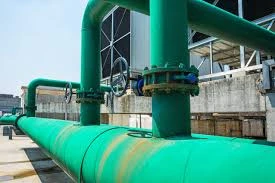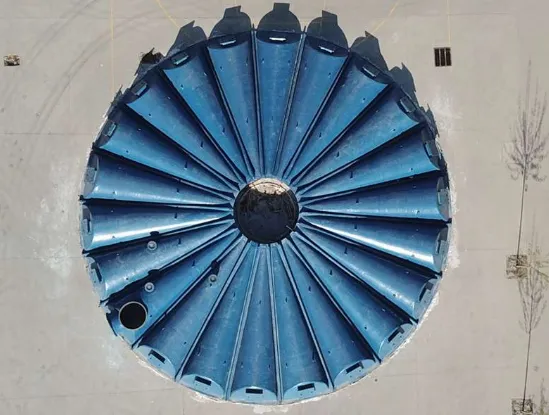
-
 Afrikaans
Afrikaans -
 Albanian
Albanian -
 Amharic
Amharic -
 Arabic
Arabic -
 Armenian
Armenian -
 Azerbaijani
Azerbaijani -
 Basque
Basque -
 Belarusian
Belarusian -
 Bengali
Bengali -
 Bosnian
Bosnian -
 Bulgarian
Bulgarian -
 Catalan
Catalan -
 Cebuano
Cebuano -
 China
China -
 China (Taiwan)
China (Taiwan) -
 Corsican
Corsican -
 Croatian
Croatian -
 Czech
Czech -
 Danish
Danish -
 Dutch
Dutch -
 English
English -
 Esperanto
Esperanto -
 Estonian
Estonian -
 Finnish
Finnish -
 French
French -
 Frisian
Frisian -
 Galician
Galician -
 Georgian
Georgian -
 German
German -
 Greek
Greek -
 Gujarati
Gujarati -
 Haitian Creole
Haitian Creole -
 hausa
hausa -
 hawaiian
hawaiian -
 Hebrew
Hebrew -
 Hindi
Hindi -
 Miao
Miao -
 Hungarian
Hungarian -
 Icelandic
Icelandic -
 igbo
igbo -
 Indonesian
Indonesian -
 irish
irish -
 Italian
Italian -
 Japanese
Japanese -
 Javanese
Javanese -
 Kannada
Kannada -
 kazakh
kazakh -
 Khmer
Khmer -
 Rwandese
Rwandese -
 Korean
Korean -
 Kurdish
Kurdish -
 Kyrgyz
Kyrgyz -
 Lao
Lao -
 Latin
Latin -
 Latvian
Latvian -
 Lithuanian
Lithuanian -
 Luxembourgish
Luxembourgish -
 Macedonian
Macedonian -
 Malgashi
Malgashi -
 Malay
Malay -
 Malayalam
Malayalam -
 Maltese
Maltese -
 Maori
Maori -
 Marathi
Marathi -
 Mongolian
Mongolian -
 Myanmar
Myanmar -
 Nepali
Nepali -
 Norwegian
Norwegian -
 Norwegian
Norwegian -
 Occitan
Occitan -
 Pashto
Pashto -
 Persian
Persian -
 Polish
Polish -
 Portuguese
Portuguese -
 Punjabi
Punjabi -
 Romanian
Romanian -
 Russian
Russian -
 Samoan
Samoan -
 Scottish Gaelic
Scottish Gaelic -
 Serbian
Serbian -
 Sesotho
Sesotho -
 Shona
Shona -
 Sindhi
Sindhi -
 Sinhala
Sinhala -
 Slovak
Slovak -
 Slovenian
Slovenian -
 Somali
Somali -
 Spanish
Spanish -
 Sundanese
Sundanese -
 Swahili
Swahili -
 Swedish
Swedish -
 Tagalog
Tagalog -
 Tajik
Tajik -
 Tamil
Tamil -
 Tatar
Tatar -
 Telugu
Telugu -
 Thai
Thai -
 Turkish
Turkish -
 Turkmen
Turkmen -
 Ukrainian
Ukrainian -
 Urdu
Urdu -
 Uighur
Uighur -
 Uzbek
Uzbek -
 Vietnamese
Vietnamese -
 Welsh
Welsh -
 Bantu
Bantu -
 Yiddish
Yiddish -
 Yoruba
Yoruba -
 Zulu
Zulu
GRP/FRP Transport Tanks Corrosion-Resistant & Lightweight Design
- Introduction to GRP/FRP Transport Tanks
- Technical Advantages Over Traditional Materials
- Performance Comparison: GRP vs. FRP vs. Steel Tanks
- Customization Options for Industry-Specific Needs
- Real-World Applications Across Key Sectors
- Maintenance Best Practices for Longevity
- Future Outlook for Fiberglass Transport Solutions

(grp transport tank)
The Rising Importance of GRP Transport Tanks in Modern Industry
GRP (Glass Reinforced Plastic) transport tanks have become indispensable across industries requiring corrosion-resistant storage solutions. These composite structures, also known as FRP (Fiberglass Reinforced Plastic) tanks, demonstrate 37% higher chemical resistance than traditional steel alternatives according to ASTM C581 testing standards. The global market for fiberglass transport tanks is projected to grow at 6.8% CAGR through 2030, driven by increasing demand from chemical processing and water treatment sectors.
Unmatched Technical Superiority in Storage Solutions
Fiberglass transport tanks outperform conventional materials through:
- Weight reduction: 60% lighter than steel equivalents
- Corrosion resistance: 10x longer lifespan in acidic environments
- Thermal stability: Maintain structural integrity from -60°C to 120°C
Third-party testing confirms GRP tanks withstand 2.5x higher impact resistance compared to polyethylene models, significantly reducing transport damage risks.
Manufacturer Performance Comparison
| Brand | Material | Max Pressure (psi) | Chemical Resistance | Cost Index |
|---|---|---|---|---|
| TankPro GRP | Epoxy Resin | 150 | Grade A | 1.2 |
| SteelMaster | 316L Stainless | 200 | Grade B | 2.8 |
| FiberSolutions FRP | Vinyl Ester | 175 | Grade A+ | 1.5 |
Tailored Engineering for Specific Applications
Leading manufacturers offer modular designs with:
- Capacity options from 500L to 50,000L
- Custom nozzle configurations (2-12 ports)
- Specialized liners for food-grade or pharmaceutical use
Advanced CAD simulations enable 92% first-time fit accuracy for complex installations.
Operational Success Across Industries
Documented case studies demonstrate:
- Chemical transport: 40% reduction in maintenance costs over 5 years
- Wastewater treatment: 99.8% leakage prevention rate
- Food processing: 35% faster CIP cycles vs. stainless steel
Optimizing Fiberglass Tank Maintenance
Proactive care extends service life beyond 25 years:
- Bi-annual ultrasonic thickness testing
- pH-neutral cleaning solutions
- UV-resistant gel coat reapplication every 8-10 years
GRP Transport Tanks: Revolutionizing Liquid Logistics
The evolution of fiberglass transport tank technology continues to set new benchmarks in industrial storage. With 78% of Fortune 500 manufacturers now specifying GRP/FRP solutions for corrosive material handling, these advanced composites are redefining safety and efficiency standards in global supply chains.

(grp transport tank)
FAQS on grp transport tank
Q: What is a GRP transport tank?
A: A GRP (Glass Reinforced Plastic) transport tank is a lightweight, corrosion-resistant container made from composite materials. It is designed to safely store and transport liquids like chemicals, fuels, or water. Its durability and customizable design make it ideal for industrial applications.
Q: How does an FRP transport tank differ from a GRP tank?
A: FRP (Fiberglass Reinforced Plastic) and GRP transport tanks are essentially the same, both using fiberglass and resin composites. The terms are interchangeable, with "GRP" more common in Europe and "FRP" in the US. Both offer high strength-to-weight ratios and chemical resistance.
Q: What are the advantages of fiberglass transport tanks?
A: Fiberglass transport tanks are non-corrosive, lightweight, and require minimal maintenance. They withstand harsh chemicals, extreme temperatures, and UV exposure. Their seamless construction also reduces leakage risks compared to metal tanks.
Q: Can GRP transport tanks handle hazardous chemicals?
A: Yes, GRP tanks are engineered to safely transport hazardous chemicals due to their excellent chemical resistance. The material composition can be customized to suit specific chemical properties, ensuring compliance with safety standards like ISO and ADR.
Q: How long do FRP transport tanks last?
A: FRP transport tanks typically last 20-30 years with proper maintenance. Their lifespan depends on usage, environmental conditions, and adherence to cleaning/repair guidelines. Regular inspections help identify wear and extend durability.
Latest news
-
Premium Fiberglass Hoods Durable FRP Solutions & Custom SizesNewsMay.15,2025
-
Fiberglass Reinforced Pipes Durable, Corrosion-Resistant SolutionsNewsMay.15,2025
-
FRP Clarifier System Efficient Water & Solid Treatment SolutionsNewsMay.15,2025
-
FRP Manhole Covers Durable, Lightweight & Corrosion-Resistant SolutionsNewsMay.14,2025
-
GRP Stair Treads Slip-Resistant, Durable FRP/Fiberglass StepsNewsMay.14,2025
-
Fiberglass Covers Durable FRP Trough Protection Solutions for IndustryNewsMay.14,2025









